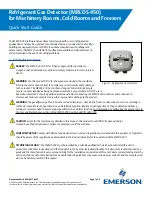
11
Comprehensive Operating Manual & Guide to Metal Detecting
PRO-TECH
THE BASICS OF METAL DETECTING
A professional metal detector is intended for locating buried metal objects. When
searching for metals, underground or on the surface, you have the following
challenges and objectives:
1.
Ignoring signals caused by ground minerals.
2.
Ignoring signals caused by metal objects that you do not want to find.
3.
Identifying a buried metal object before you dig it up.
4.
Estimating the size and depth of objects to facilitate digging them up.
5.
Eliminating the effects of electromagnetic interference from other electronic
devices.
Your PRO-TECH metal detector is designed with these things in mind.
1. Ground Minerals
All soils contain minerals. Signals from ground minerals can interfere with the
signals from metal objects you want to find. All soils differ, and can differ greatly,
in the type and amount of ground minerals present. You therefore want to
calibrate the detector to the specific ground conditions where you are hunting.
The detector incorporates both automated and manual ground balancing
features which will eliminate false signals from most types of soils. To maximize
the detector's target identification accuracy and depth of detection, use the
GROUND GRAB
®
(GG) Computerized Ground Balancing function to calibrate
the detector to the ground where you are searching. See the section on
GROUND BALANCING for details.
26
PRO-TECH
Comprehensive Operating Manual & Guide to Metal Detecting
SIGNAL Indicator
The lower-left bar graph designates
SIGNAL strength only when operating in
Discrimination Mode.
The signal strength indicator at the bottom-
left of the screen indicates how large or
close the buried metal target is.
If all bars are illuminated, the target is large
or close to the searchcoil.
If one or two bars are illuminated, the
target is far away or small, or both.
DEPTH Indicator
When operating in Discrimination Mode, a
target's location and size can be verified
using the PINPOINT control.
Press PinPoint to temporarily detect metal
without searchcoil motion, and a monotone
hum.
While holding the PinPoint button, the
DEPTH indicator will appear. The number
beneath DEPTH represents the distance of
the object, in inches, from the searchcoil.
The Depth scale is calibrated to coin-sized
objects. For objects other than a coin, the
numeric value is a relative measure of the
target's depth.
AUDIO FEEDBACK
When a target is detected, the PRO-TECH
will respond with two types of sound:
1. V.C.O. (Voltage Controlled Oscillator),
is an audio response with variable
pitch and volume.
2. A LOW tone beep.
In Discrimination Mode, targets which fall
into the zone along the arc whose segments
are shaded will be identified with a LOW
tone beep and solid segments with a V.C.O.
As the user sets the discrimination level
with the + and - buttons, he is determining
which targets will induce the low tone, and
which will be eliminated.
All targets' audio responses in All Metal
Mode will be V.C.O.
V.C.O. (Voltage Controlled Oscillator), is an
audio response which provides a good feel
for the target.
The stronger the target signal, the higher
the volume and the higher the audio
pitch.
Very weak signals will have the faintest
volume and lowest pitch.
For this reason, the use of headphones
is always recommended for detecting the
smaller and deeper targets.
2-DIGIT TARGET INDICATOR
In Discrimination Mode the 2-digit target
indicator, in the middle of the screen,
provides a specific target value to help
identify buried targets more accurately.
With practice in the field, you will learn to
associate target values with the probable
identification of buried objects. The target
value can vary each time the searchcoil
passes over the target, depending upon the
orientation of the object and its distance
from the searchcoil.
As a starting point, refer to the table below.
TARGET Readout
The table below lists some common
approximate target values. With
experience in the field, you will
recognize many types of metal objects
by their numeric value.
OBJECT
TARGET-ID
foil from gum wrapper
47 - 48
U.S. nickel (5¢ coin)
typically 58
aluminum pull-tab
60 - 75
aluminum screw cap
70 - 80
zinc penny (dated after 1982)
typically 78
aluminum soda pop can
75 - 85
copper penny, clad dime
typically 83
U.S. quarter (25¢ coin), clad
typically 85
50¢ coin, modern clad
typically 87
old silver dollar coin
typically 89
US silver Eagle $1 coin
typically 91
Caution:
The target indications are
visual references. Many other types of
metal can also be represented by a given
Target-ID.
TARGET DISPLAY and AUDIO











































